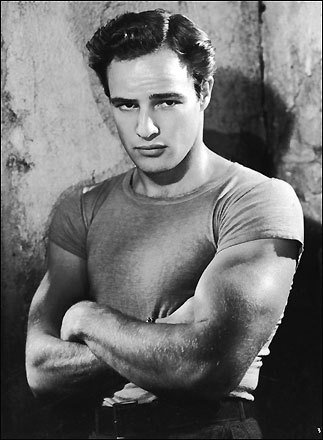History of the T-Shirt
TOMEK ERNESTOWICZ • dawno temuKto pierwszy zaczął nosić T-shirty i w jaki sposób stały się one tak bardzo popularne?


Jak bardzo lubicie koszulki z krótkimi rękawami? Czy wyobrażacie sobie swoją garderobę bez nich?
Odkrywamy, kto pierwszy zaczął nosić T-shirty i w jaki sposób stały się one tak bardzo popularne.
At the beginning of the twentieth century, the T-Shirt quickly became an American favorite. Now, a century later, at the beginning of the twenty-first century, the T-Shirt remains as popular as ever.
The American T-Shirt began during WWI when American troops noticed European soldiers wearing a comfortable and lightweight cotton undershirt during the hot and humid European summer days. Compared to the wool uniforms the American soldiers wore, these undershirts were cooler and more comfortable and they quickly caught on with the Americans. Due to their simple design, these shirts became known in the USA as "T" shirts or, as we know them now, "T-Shirts".
By the 1920s "T-Shirt" had become an official word in the American English language with it's inclusion in Merriam-Webster's Dictionary. By WWII, both the Navy and the Army had included the T-Shirt as standard issue underwear.
Initially pegged as an undergarment, the T-Shirt soon came into it's own on the big screen. John Wayne, Marlon Brando and James Dean all shocked Americans by wearing their underwear on national TV. In 1951, Marlon Brando shocked Americans in his film "A Streetcar Named Desire" when his T-Shirt was ripped off of his body, revealing his naked chest.
By 1955, the T-Shirt was tolerated worn without another shirt covering it. Then James Dean made the T-Shirt real cool in "Rebel Without A Cause". James Dean made the T-Shirt a contemporary symbol of rebellious youth.
In the 60s people began to tie-dye and screenprint the basic cotton T-Shirt, making it an even bigger commercial success. Advances in printing and dying allowed more variety and the Tank Top, Muscle Shirt, Scoop Neck, V-Neck, and many other variations of the T-Shirt came in to fashion.
The T-Shirt was inexpensive, in style, and could make any statement you cared to print. The American T-Shirt came into it's own during the late sixties and seventies. Rock and Roll bands began to realize that they could make significant amounts of money selling their T-Shirts.
During the 80s and 90s the production of T-Shirts and the mechanics of printing on them increased the volume and availability. Soon the American T-Shirt was being called a commodity item in the apparel industry.
Słowniczek:
- humid – wilgotny
- catch on – zyskać popularność, przyjąć się (with – wśród)
- pegged – (US) zaklasyfikowany (as – jako)
- undergarment – bielizna (= underwear)
- come into one’s (it’s) own – odnieść sukces
- rip off – zedrzeć, zerwać
- tie-dye – farbować nierównomiernie techniką batiki (przez wcześniejsze zawiązanie materiału)
- screenprint – robić nadruki techniką sitodruku
- tank top – bezrękawnik
- muscle shirt – obcisły podkoszulek
- scoop neck – okrągły dekolt
- V-neck – dekolt "w serek"
- come in (to fashion) – wejść w modę, upowszechnić się
- apparel – (US) odzież
Czym są dla Was T-shirty? Jakie są Wasze ulubione rodzaje? Czy szukacie oryginalnych nadruków?
Źródło: http://www.t-shirtcountdown.com/t-shirts/history.html
Zobacz także: History of the Teddy-Bear

Najnowsze

Trendy w meblach ogrodowych 2025 – inspiracje na meble tarasowe i balkonowe
MATERIAŁ PROMOCYJNY








Ten artykuł nie ma jeszcze komentarzy
Pokaż wszystkie komentarze